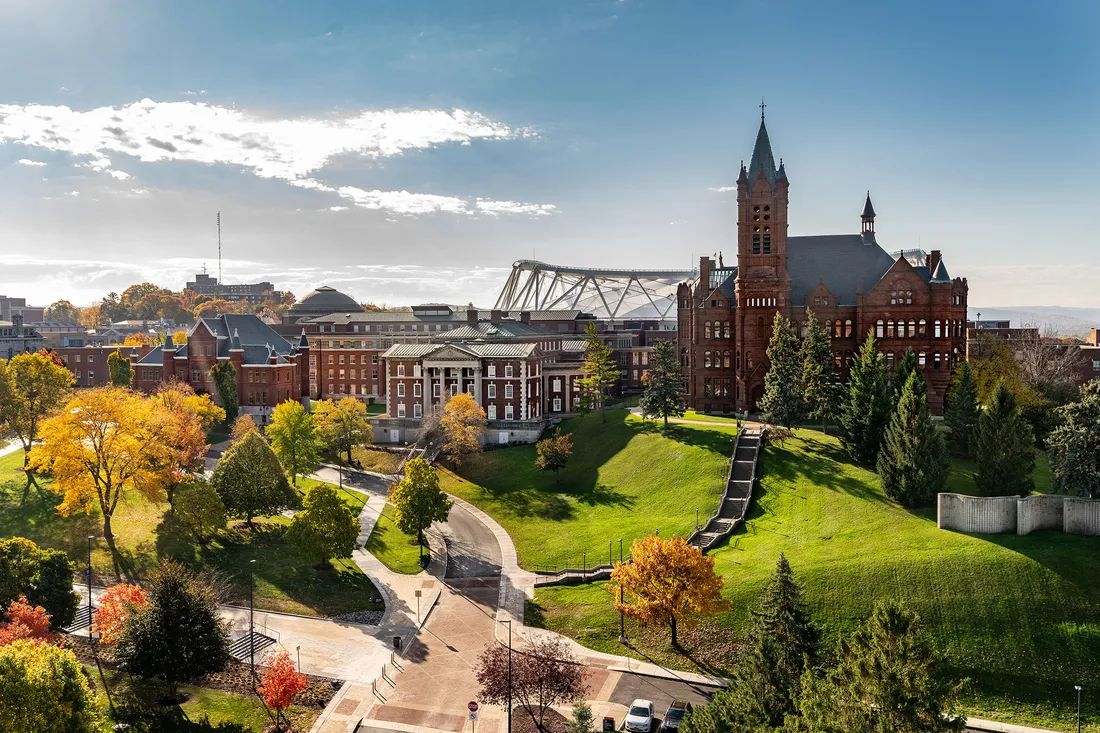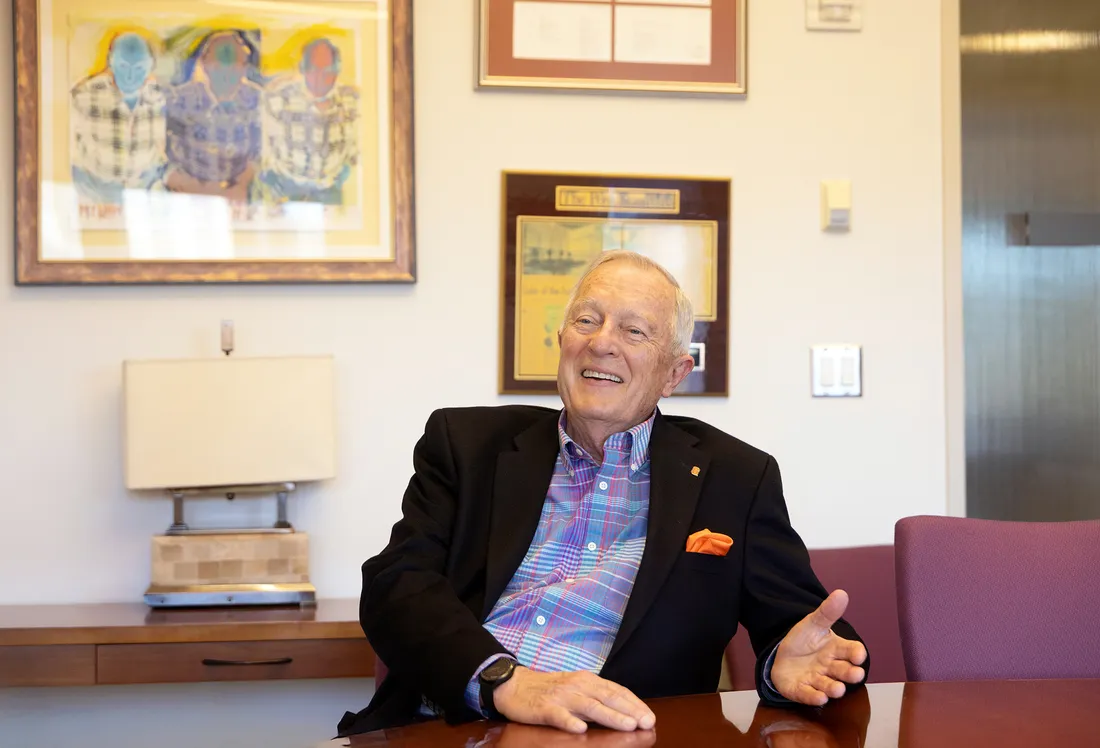Summer is crucial for Syracuse University professors, who use the time to advance research, design and revise courses, and prepare for the upcoming academic year. Such pursuits enable them to return to campus with a renewed sense of purpose, benefiting our most important resource: you.
Documenting the “King of Instruments”

Associate professor Anne Laver (left) with Abbie Wood ’25 in Hendricks Chapel during filming of The Organ in America.
University Organist Anne Laver can add “filmmaker” to her growing list of accomplishments. This past summer, she collaborated with Will Fraser, founder of Fugue State Films in the U.K., on a documentary titled The Organ in America. Special emphasis was on New York state’s historical pipe organs, including the 75-year-old Holtkamp organ in Syracuse’s Setnor Auditorium.
“Our region is home to a wide range of pipe organs, each reflecting when and where they were built,” says Laver, an associate professor of music in the College of Visual and Performing Arts (VPA). “I’ve interviewed local organists, builders and historians who discuss and demonstrate their respective instruments.”
The feature-length film seeks to rectify omissions in the mostly European narrative of the “King of Instruments.”
Other organs Laver considers are Hilborne Roosevelt’s Opus 15, which was built in Buffalo, New York, for the 1876 Centennial Exposition in Philadelphia; a 1927 E.M. Skinner organ in Rochester, New York; and Cornell University’s 2010 “fantasy reconstruction” of a German Baroque organ.
Scheduled for release in late 2026, The Organ in America hopes to do more than showcase American craftsmanship and ingenuity. “It’s a call to action,” Laver explains, to perpetuate the legacy of the pipe organ.
In addition to incorporating her findings into literature, technique and pedagogy courses in VPA’s Setnor School of Music, Laver is promoting the film by hosting workshops and lecture recitals.
She also is exploring distribution opportunities with PBS, the American Guild of Organists and The Organ Historical Society.
Innovating Therapies Through Science
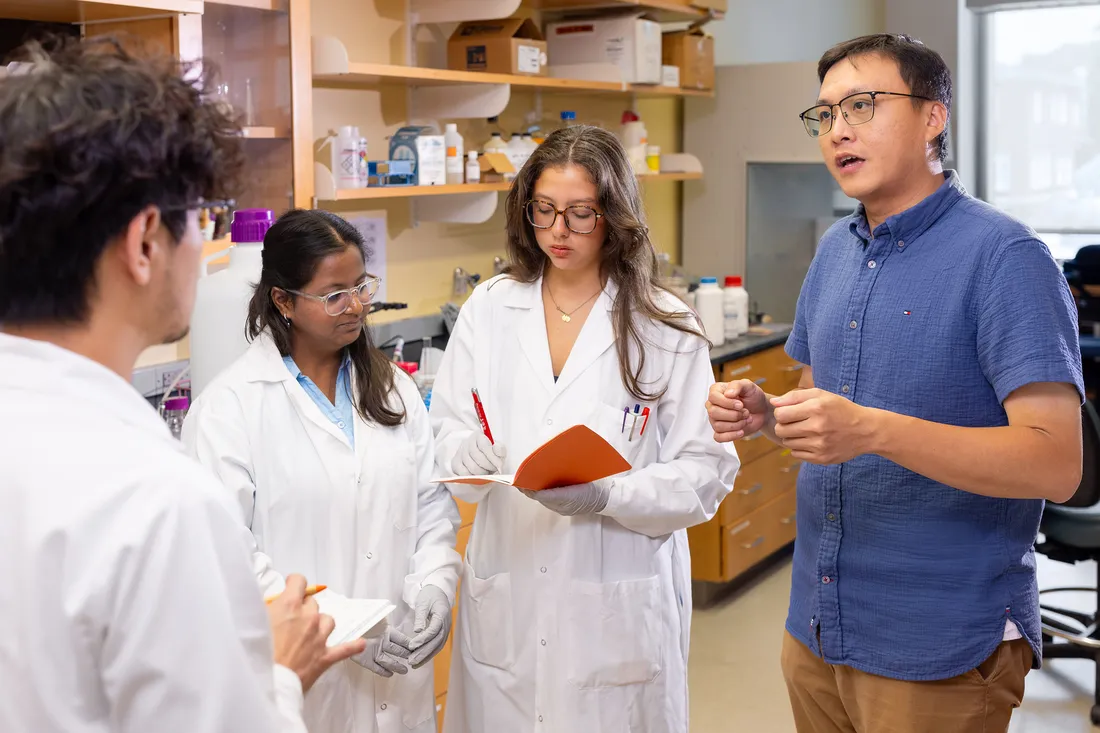
Assistant professor Chih Hung Lo and his students study the underlying biology of neurodegenerative diseases.
This time last year, Chih Hung Lo was wrapping up a three-year postdoctoral research fellowship in Singapore. Today, his lab in Syracuse’s Life Sciences Complex hums with activity involving neurodegenerative diseases.
An assistant professor of biology in the College of Arts and Sciences, Lo is interested in how lysosomes—tiny sacs filled with enzymes—digest and remove unwanted substances in brain cells. “We’ve discovered that not all lysosomes are alike, that they have different roles,” says Lo, who also teaches in the college’s Interdisciplinary Neuroscience Program.
This past summer, he and his students wielded cutting-edge activities, like high-resolution imaging, computation analysis and disease modeling, to monitor neural activity.
They also figured out how to isolate lysosomes to examine their influence on brain cell metabolism and communication.
“Understanding the link between lysosome function and brain cells filled with inflammation and harmful proteins could pave the way for new treatments for Alzheimer’s and related forms of dementia,” says Lo, adding that each of our 170 billion brain cells contains up to a thousand lysosomes.
He’s currently integrating conceptual knowledge and methodologies into his fall coursework, which includes an interdisciplinary survey on neuroscience methods and a seminar on neurodegenerative disease.
Lo also is drawing on summer case studies to illustrate key concepts in the classroom, such as organelle dysfunction in brain disorders and the role of basic research in therapeutic developments.
“All of my students have contributed to ongoing projects this summer,” he continues. “Their work fosters critical thinking that plays out in journal clubs, research-driven assignments and other lab projects.”
A STEM-Designated Approach to Communications
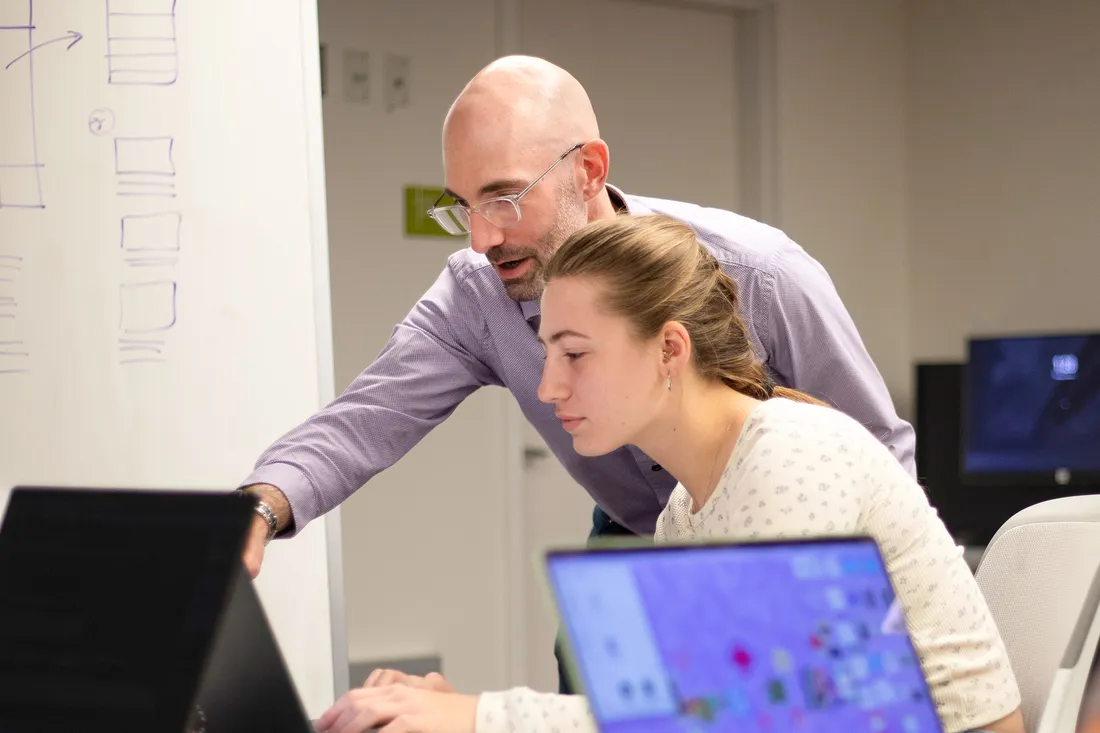
Associate professor Adam Peruta ’00, G’04 directs Advanced Media Management, the first—and only—STEM-designated degree program in the Newhouse School.
Project-based, open-ended learning is a hallmark of Syracuse University. It’s also the stuff of science, technology, engineering and mathematics (STEM) learning.
Adam Peruta ’00, G’04 believes that STEM has a place in communications, too. Based in the S.I. Newhouse School of Public Communications, he oversees Advanced Media Management (AMM), an M.S. program that uses media, business and technology pedagogies to prepare students for traditional and emerging communications careers.
AMM has the distinction of being the Newhouse School’s first and only program with a STEM-designated degree, a reclassification that goes into effect this fall.
“Our core curriculum applies AI and emerging technologies, data science and product-engineering mindsets to modern-day media problems,” says Peruta, an associate professor of magazine, news and digital media.
Since May, he has been rebuilding AMM’s infrastructure to make the STEM component “immediately impactful.” In addition to expanding the program’s internships, Peruta has outfitted his AI for Media Professionals course with high-performance workstations and advanced media software.
A STEM-designated degree signals “rigorous training” to prospective media employers, Peruta declares, especially those looking to fill nontraditional, tech-oriented jobs.
“The STEM label is also consequential to recruiting,” he adds, noting that international students can apply for a 24-month, “STEM OPT” extension through the Department of Homeland Security. “It reflects our commitment to quantitative and technical competencies.”
The Politics of Migration
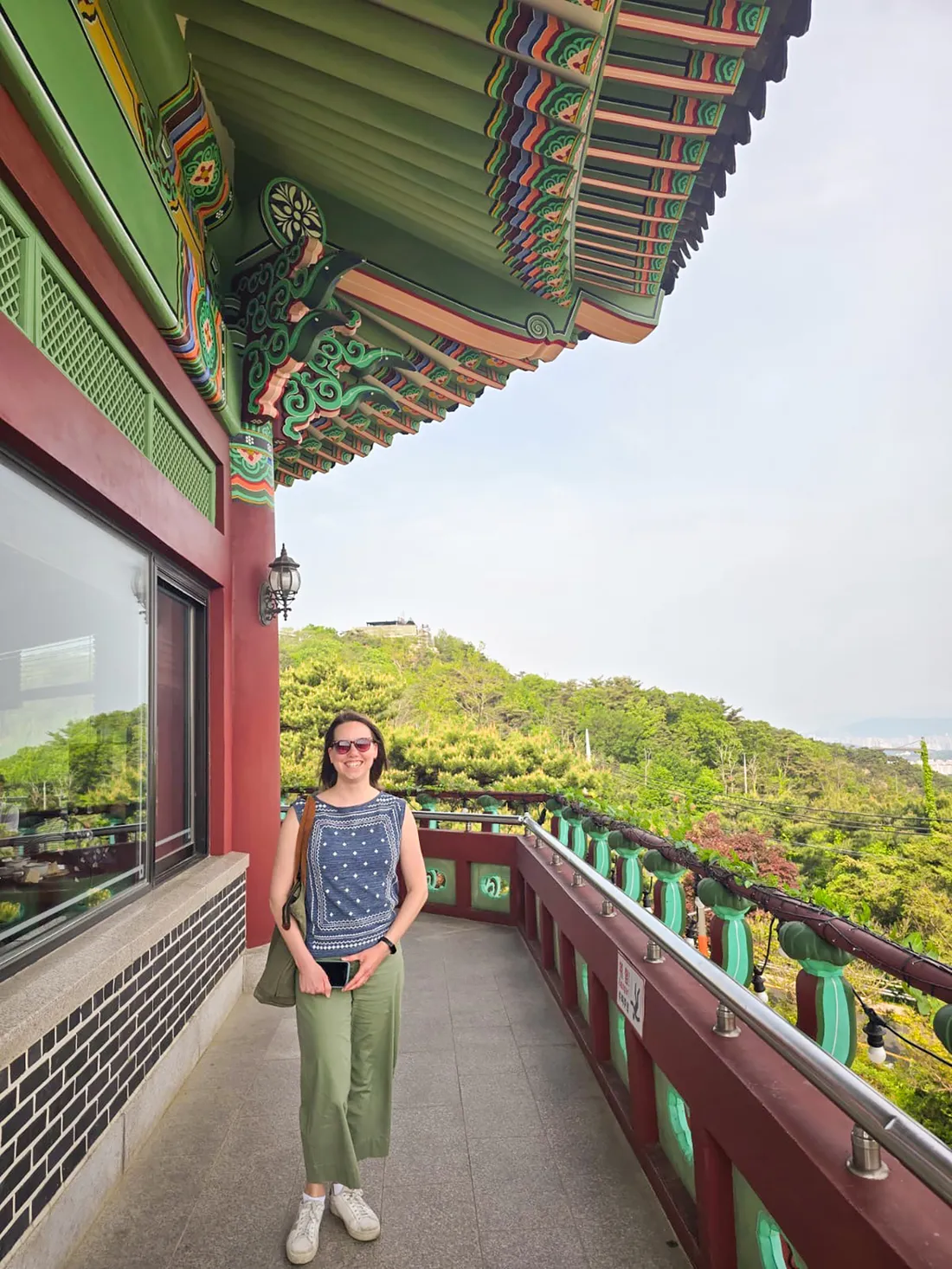
South Korea is grappling with immigration issues caused in part by the war in Ukraine, explains assistant professor Lauren Woodard, shown here in Seoul. She also traveled to the Georgian capital of Tbilisi.
The ripple effects of the war in Ukraine are felt everywhere. At Syracuse, the 11-year-old conflict—which has ramped up considerably since Russia’s full-scale invasion in 2022—has begot timely and relevant scholarship.
Lauren Woodard, assistant professor of anthropology in the Maxwell School of Citizenship and Public Affairs, recently traveled to the Georgian capital of Tbilisi and to major cities in South Korea to examine the war’s impact on migration patterns throughout Europe and Asia.
“Russian officials are threatening migrant workers with deportation and denaturalization unless they fight against Ukraine,” she says, adding that Central Asia has been a source of cheap Russian labor since the late 1990s.
Likewise, Russian citizens—fearing conscription and an authoritative political climate—have flocked to neighboring countries like Georgia and ones as far away as South Korea.
“Historically a country of emigration, South Korea is grappling with the impact of immigration and multicultural families in various aspects of society,” says Woodard, who recently visited a village in Gwangju housing one of Asia’s largest communities of ethnic Koreans from the former Soviet Union.
Her findings will be integrated into courses like Global Encounters: Comparing World Views and Values Cross-Culturally; Language, Culture and Society; and Migration, Borders, Belonging, a course that she has designed and is teaching next spring about migration-based global case studies.
Woodard also is planning follow-up trips to South Korea and Georgia next summer. “I’d love to take my students with me someday,” she says.

